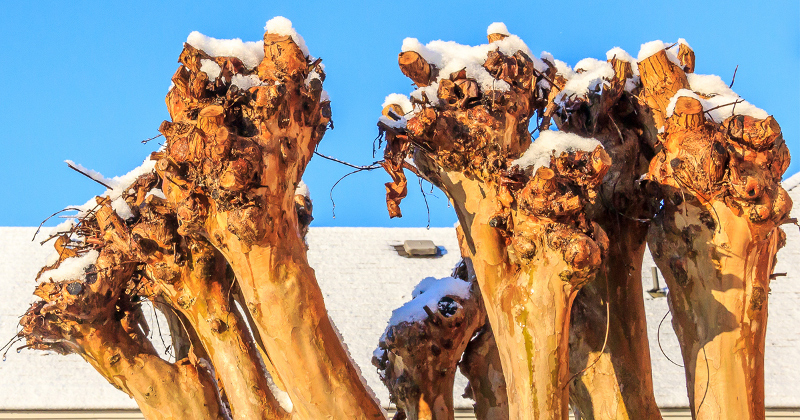Crape Myrtle is a flowering perennial that is winter hardy in USDA growing zones 7 through 9. This shrub is deciduous and does not require much in terms of winter care. Once the leaves fall off, Crape Myrtle just needs to be left alone until the spring. Prune the plant in the winter or early spring before new growth starts to appear, and this shrub will be able to start the growing season strong.
No additional winter care or protection is necessary for Crape Myrtle when grown in warmer climates. Cover the plant if possible to protect it from the elements should a rare weather event like a snow or ice storm happen. Potted Crape Myrtle grown in cold areas will need to be brought into a protected and moderately warm spot, like a basement or garage.
Cutting Back Crape Myrtle For Winter
As a deciduous plant, Crape Myrtle goes dormant during the winter. The plant should be pruned and shaped when dormant, and most gardeners trim the plant during the fall or early spring. Trimming in the spring may be a more efficient use of time, so any overgrowth and winter damage can be removed simultaneously. Ideally, the plant should be pruned before new growth emerges to not interfere with flower production.
Never cut the tree or shrub back aggressively. This is a common mistake done by gardeners but can be very harmful to the plants and it looks terrible.

Crape Myrtle Winter Care in Pots
Crape Myrtle grown in planters can be left outdoors in growing zones 7, 8, and 9. The containers should be moved to a protected area, like near a building, to prevent a strong gust of wind from knocking the plant over. Potted Crape Myrtle grown in colder regions will need to be brought inside for the winter. The roots of potted plants are not very well insulated from the air temperature, and they may be damaged if exposed to freezing temperatures. A space like a basement will keep the plant out of the elements and safe during the winter.
Watering Crape Myrtle in Winter
Plants like the Crape Myrtle do not need to be watered when dormant. Starting in the fall, the plants should be hardened off. Hardening off is a process of cutting back on how much water the plant is given to help it transition from actively growing to dormant.
Growing Crape Myrtle Indoors
Crape Myrtle is deciduous, so the plant drops its leaves during the winter and goes dormant. The plant needs this dormant period to recover from the previous growing season and gear up for the spring. It is not very appealing visually, so there is no reason to bring the plant indoors for the winter. Potted Crape Myrtle will need to be protected from the elements and cold temperatures, especially when grown in northern climates. The plant will do best in an area that will not experience very chilly temperatures.
Steps To Care For Crape Myrtle in Winter
Crape Myrtle requires very little care, especially during the winter. This easy-to-maintain plant is deciduous and experiences dormancy during the fall and winter. Plants in the ground should be left alone, while potted Crape Myrtle plants should be moved to a protected area.
Step 1 - Crape Myrtle plants can overwinter outdoors in USDA growing zones 7 through 9.
Step 2 - The plant should be pruned while dormant, either in the fall or early spring.
Step 3 - Potted Crape Myrtle plants should be moved to an area that offers some protection.
Step 4 - Plants grown in cold climates will need to be moved indoors for the winter.
 |
Author Alison Cotsonas - Published 25-01-2022 |
